Filled with many mysteries and a great deal of spirituality, the mythology and culture of ancient Egyptians are surely an important part of the history of civilization. Admittedly only to a limited extent, today we are able to comprehend the hieroglyphs depicting the events that occurred during the age of pharaohs.
That being said, knowledge of Egyptian symbolism is essential to have a better understanding of those times. For those who have been wondering, here are the most prominent ancient Egyptian symbols and their meanings:
Table of Contents
Ankh, The Egyptian Symbol Of Life
As the most commonly used symbol among the ancient Egyptian symbols, the Ankh (which is also known as crux ansata by Coptic Christians) represents life and immortality.
It was also used as the symbol of the union between men and women, particularly the union of Osiris and Isis which was believed to flood the river of Nile thus bringing fertility to Egypt. That is the reason why the ankh is also called the Key of the Nile.
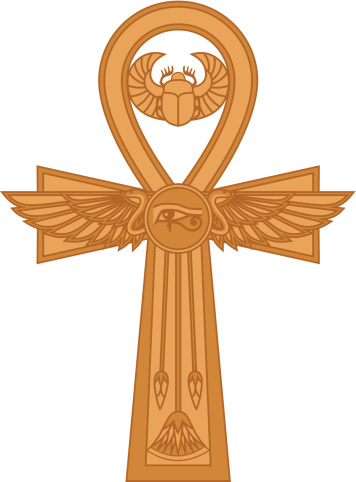
In addition to being used as the symbol of the purifying and life-giving power of water and clairvoyance (the ability to see “the beyond”), the ankh was believed to be “the key to eternity”, “the key to the underworld”.
Sometimes ankhs were drawn on temple walls as they were believed to provide divine protection. If you would like to learn more about the Egyptian symbol of life, click below to check out our detailed article:
[irp posts=”2170″ name=”Ankh, Egyptian Symbol of Life and Immortality and Its Meaning”]
The Eye of Horus
Also known as Wadjet (Udjat, Uadjet, Uto, Wedjoyet, Edjo and Uto), the Eye of Horus symbol represents protection, healing, good health and royal power.
It is also known as the symbol of moon. Ancient Egyptians believed that amulets bearing the Eye of Horus had healing powers.
The Eye of Horus was also used as a medical tool to measure the ingredients while preparing medicine.
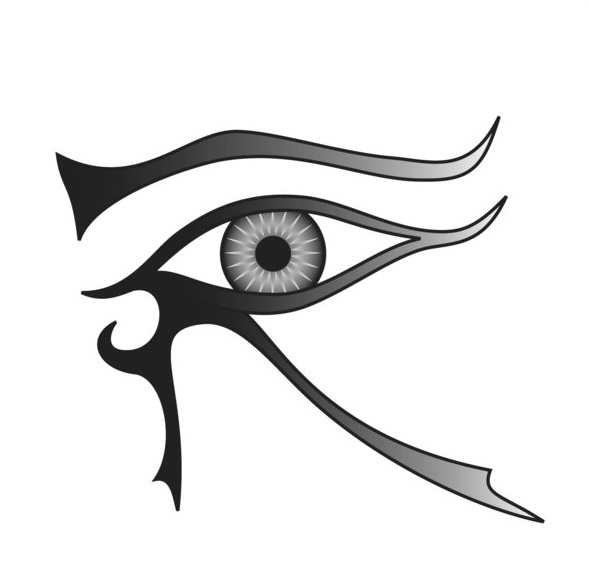
According to the myth, Horus and Seth/were fighting to replace Osiris after his death and Seth gouged Horus’ left eye.
Hator (or Toth) healed the eye using magic on some parts of it and Seth offered the eye to his father, Osiris to bring him back to life. That is the reason the Eye of Horus is also known as the symbol of sacrifice.
The Eye of Providence (the Masonic all-seeing eye) on US dollar bills was derived from the eye of Horus.
If you’d like to learn more about the Eye of Horus, also known as the Egyptian Eye, read our detailed post by clicking below:
[irp posts=”3000″ name=”The Eye of Horus (The Egyptian Eye) and Its Meaning”]
The Eye of Ra
There are different myths regarding the origin of the Eye of Ra symbol. However, most experts believe that the symbol was actually the right eye of Horus and became to known as the Eye of Ra/Re in time.
The two symbols mostly represented the same concepts. That being said, according to different myths, the Eye of Ra symbol was identified as the personification of many goddesses in Egyptian mythology such as Wadjet, Hathor, Mut, Sekhmet and Bastet.
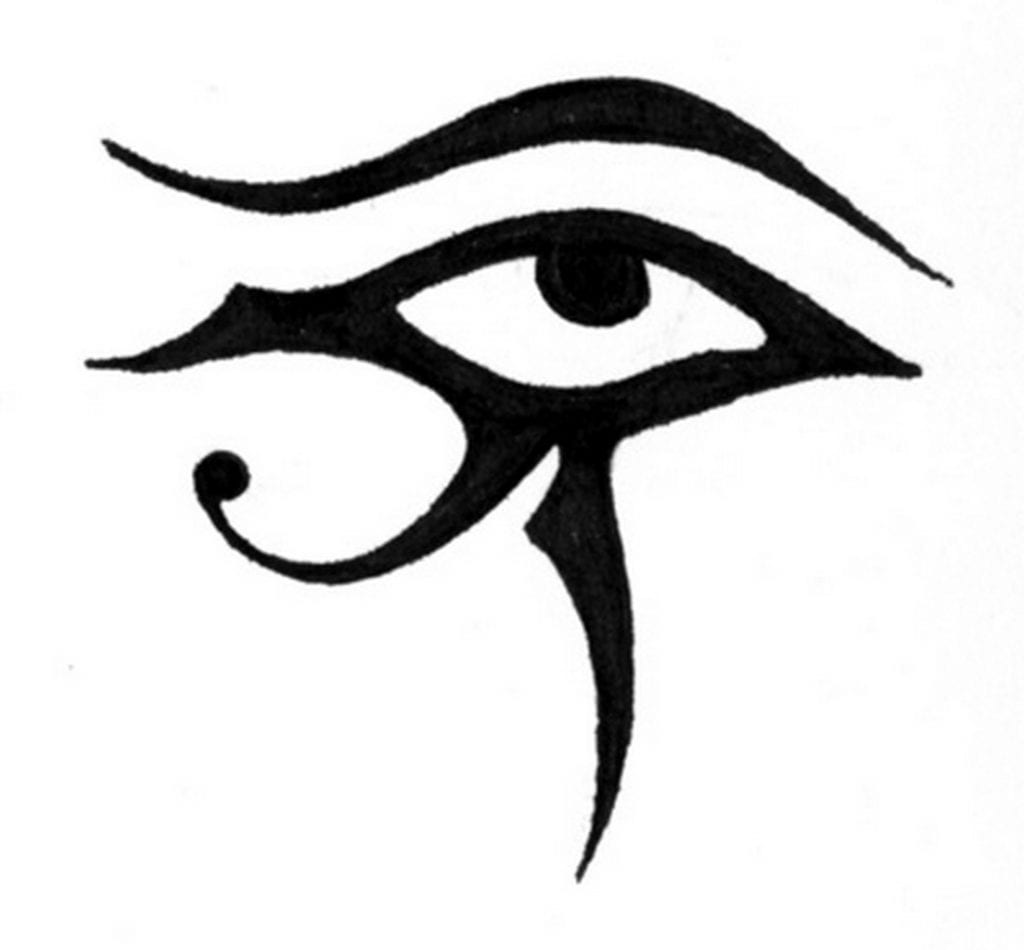
Ra/Re is the sun god in Egyptian mythology. Therefore, the Eye of Ra symbolizes sun. Read more about Ra the god of sun here.
Also, you can check out our detailed post about the Eye of Ra symbol by clicking below:
[irp posts=”3698″ name=”The Eye of Ra (Re/Rah), Ancient Egyptian Symbol and Its Meaning”]
Ouroboros
Ouroboros in Egyptian mythology was one of the symbols of sun as it represented the travels of Aten, the sun disk in Egyptian mythology.
In addition to that, ouroboros represented rebirth, recreation of life and perpetuity.
In the Book of the Dead, “the snake eating itself/the snake eating its tail” is closely associated with Atum, the first god who came into being from the chaotic waters of Nun (the primordial water from which the whole creation began in the first place) as he was born from these waters in the form of a serpent that renewed itself every morning.
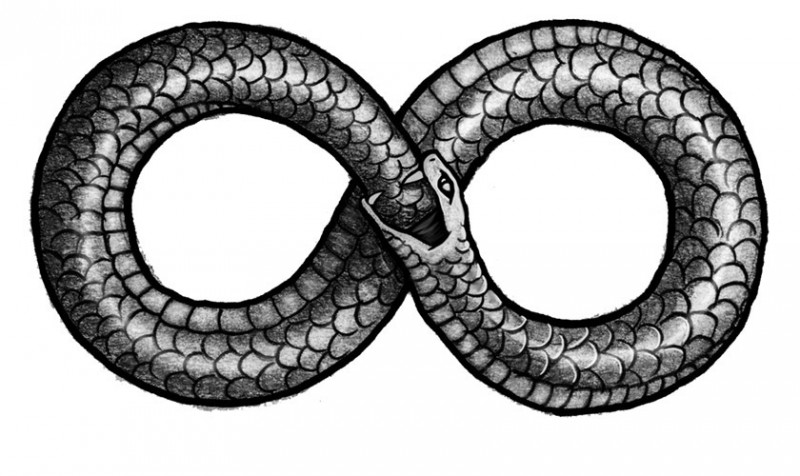
Egyptians passed the ouroboros symbol on to Phoenicians who eventually passed it to the Greek culture. The name ouroboros was given to the symbol by Greeks.
Also known as the infinity symbol, ouroboros is a very commonly used symbol throughout the world including Norse mythology where it is known as Jörmungandr.
If you would like to know more about it, click below to read our detailed article about ouroboros, the infinity symbol, its history and uses in different cultures throughout history:
[irp posts=”1143″ name=”Ouroboros, The Infinity Symbol”]
Amenta
Amenta symbol in ancient Egyptian culture represents the Land of the Dead(the Underworld).
Amenta was originally used as the symbol of the horizon where the sun set. In time, it was used to represent the west bank of the Nile.
As this was also where the Egyptians buried their dead, this is believed to be the reason why amenta became the symbol of the Underworld in time.
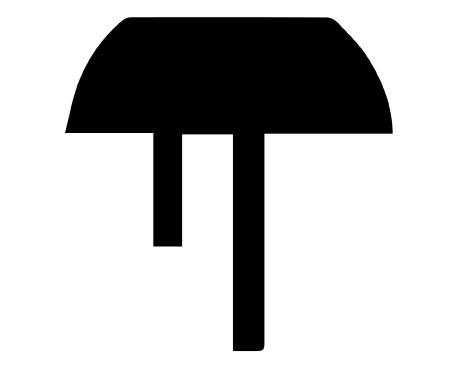
Scarab
The next on our list is Scarab, one of the most important ancient Egyptian symbols. Scarab beetle (Scarabaeus sacer), which is also known as the dung beetle, represents the sun, recreation of life/resurrection and transformation.
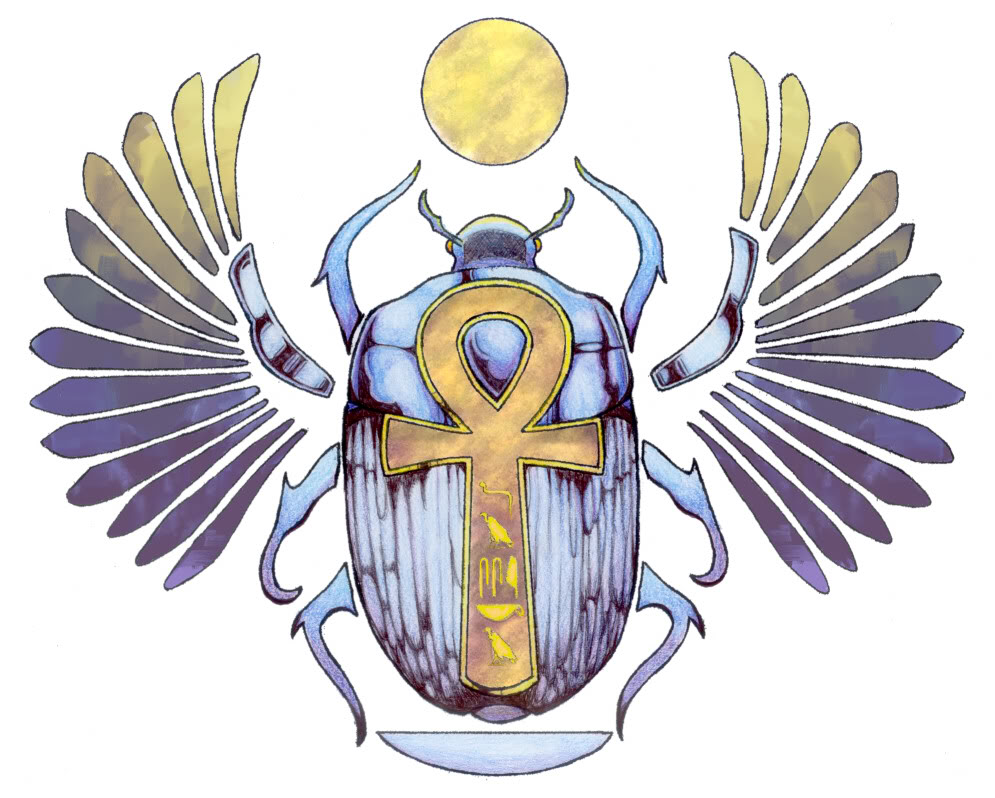
Seeing Scarab beetles rolling balls of dung (as their source of food) ancient Egyptians believed that these beetles recreated life.
However, that was because they confused the eggs laid and buried in sand by female scarab beetles with the rolls made as the food source. Therefore, they thought these beetles “created life out of nothing”.
Djed Pillar
Djed pillar, which is also known as “the backbone of Osiris”, is the symbol that represents strength and stability in ancient Egyptian culture.
It is associated with Ptah, the god of creation and Osiris, the god of the underworld and the dead.
Although it was firstly known as the symbol of Ptah, the cult of Osiris adopted the djed pillar symbol in time. That is where the name “the backbone of Osiris” comes from.
Egyptians believed that the Djed pillar was actually the combination of the four pillars that held the four corners of the earth.
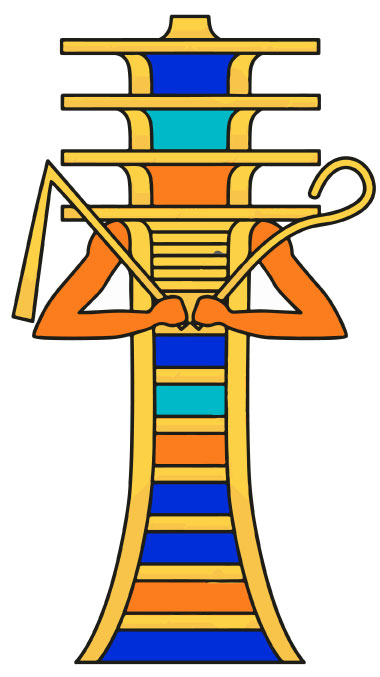
Tiet – The Knot of Isis
Tiet/Tyet, also known as the Knot of Isis and the Blood of Isis, is an Egyptian symbol that looks a lot like the ankh symbol. Its meaning was also interpreted to be similar to the ankh. It is assumed to symbolize life.
It was generally identified with goddess Isis and mostly used with the ankh and Djed Pillar of Osiris which is why it was interpreted the dual nature of life.
There is no accurate information or valid suggestion regarding the name the Blood of Isis but it is assumed to be given to Tiet for it represented the menstrual blood of Isis and the magical powers it gave.
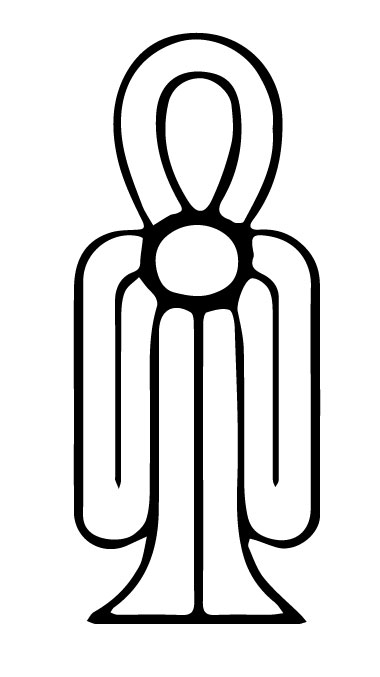
Ka Symbol / Ka Spirit
Ka symbol in one of the most complex Egyptian symbols used in hieroglyphics. That is because it represented three different spiritual concepts.
Ka was the symbol of receiving life from other men and gods in addition to being the source of these powers and the spiritual double of every living men.
The word “ka” literally means “spirit” or “soul” and it was believed to represent the soul that was breathed into babies by goddesses Heket or Meskhenet when they were born.
Ka was also the spiritual double born with every human being. It lived but did not die with that person and lived on as long as it had a place to live. That is to say, as long as it had a body to live in.
That was one of the main reasons why ancient Egyptians mummified their dead. It was believed that a person would lose the chance to have an eternal life if his body decomposed thus causing his ka’s death.
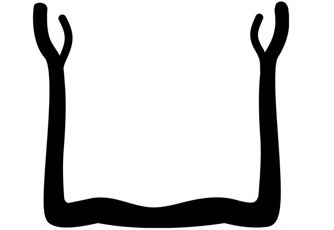
Ba
Shaped as a bird (mostly a falcon) with a human head, the Ba symbol was shown as leaving or entering someone’s tomb or beside his mummified body.
The word “Ba” might be interpreted as “soul” or “spirit” although “spiritual manifestation” would be a more accurate translation.
That is because Ba is known as a part of the soul in ancient Egyptian belief. More specifically, Ba was believed to be the unique character of an object.
This comes close to the meaning of “personality” for the lack of a better word. According to this belief, even an inanimate object could have Ba.
As noted in the Coffin Texts, Ba came into existence after the death of a person and join Ka, the essence of vitality in the afterlife while some people believed that it existed before death and survived the experience.
Renowned Egyptologist, Louis Žabkar suggested that Ba that resurrected after death was the person himself, the physical existence of that person rather than an immaterial being.
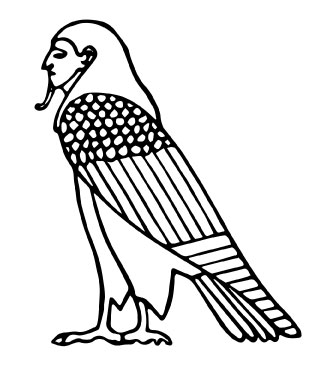
The Feather of Maat
The Feather of Maat/Ma’at is one of the most common Egyptian symbols used in hieroglyphics. Goddess Maat represented justice in Egyptian culture and the Feather of Maat can be seen within the context of “ensuring justice” in ancient inscriptions.
That is because ancient Egyptians believed that one’s heart would be weighed against the Feather of Maat in the Hall of Two Truths when his soul entered Duat (the Underworld).
If his heart was found to be equal to or lighter than this would mean he was a virtuous person and he would go to Aaru (paradise ruled by Osiris).
If not, then his heart would be eaten by Ammit, the soul-eating goddess and he would be cursed to remain in the Underworld forever.
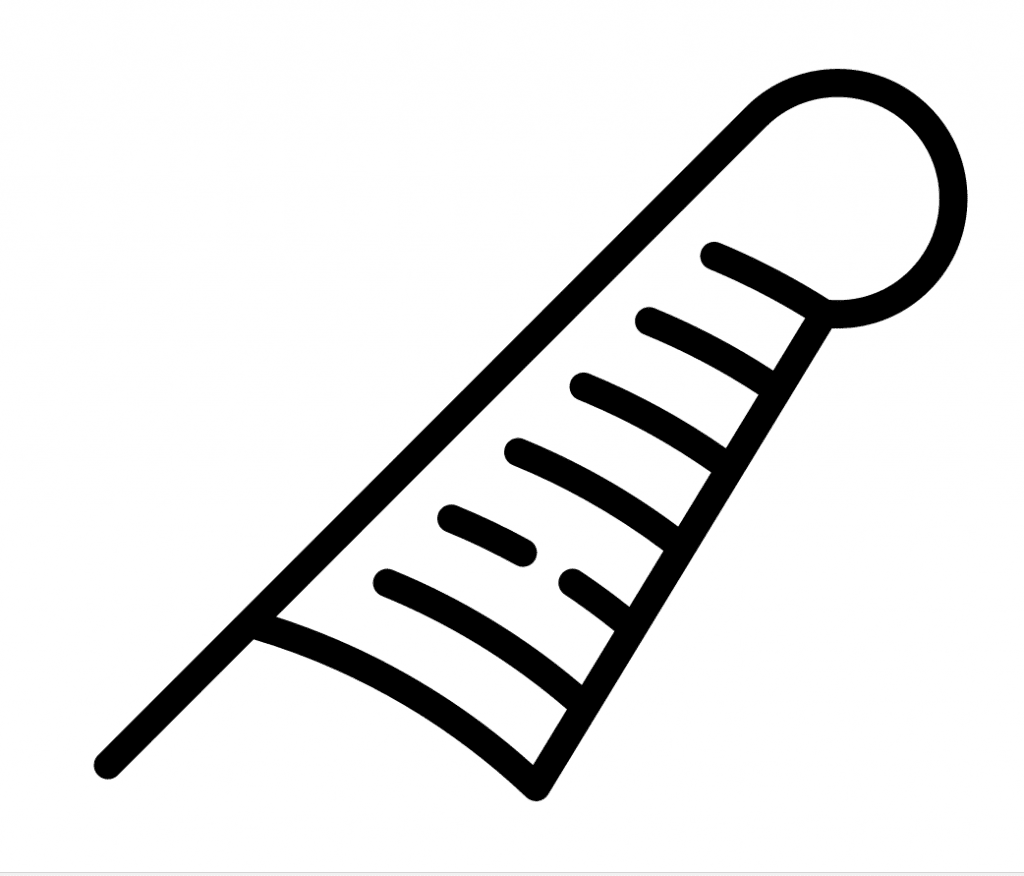
Was
Was symbol or Was scepter was the symbol of power in ancient Egyptian culture. It represented the dominion of gods, that is, a divine dominion and power rather than an earthly power.
According to the belief, it also ensured the continuance of a king’s prosperity.
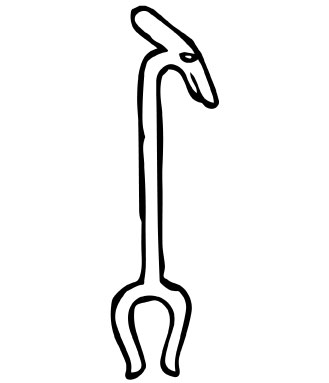
Deshret
Deshret, also known as the Red Crown of Egypt, is the symbol that represents Lower Egypt, the lands of goddess Wadjet. It is also used as the symbol of Kemet, the fertile lands within the territory of Set.
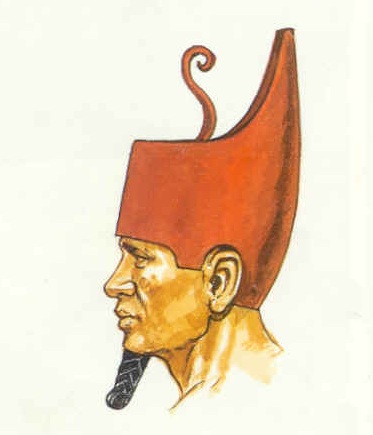
Hedjet
Hedjet the White Crown was one of two crowns of Egypt which represented the kingdom of Upper Egypt. It was combined with the Red Crown of Lower Egypt, Deshret to form the Pschent, Double Crown of Egypt when the country was unified.
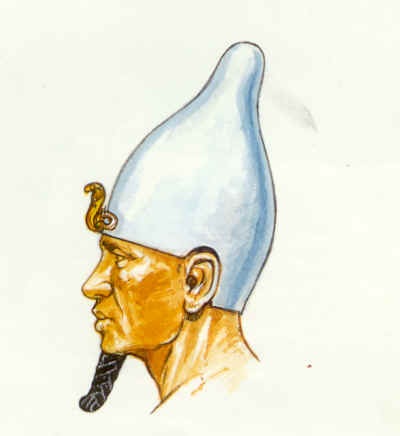
Pschent
Pschent was the Double Crown of Egypt comprised of the Red Crown and the White Crown, Deshret and Hedjet representing Lower Egypt and Upper Egypt, respectively. It represented the unity of Egypt and the pharaoh’s total control over whole Egypt.
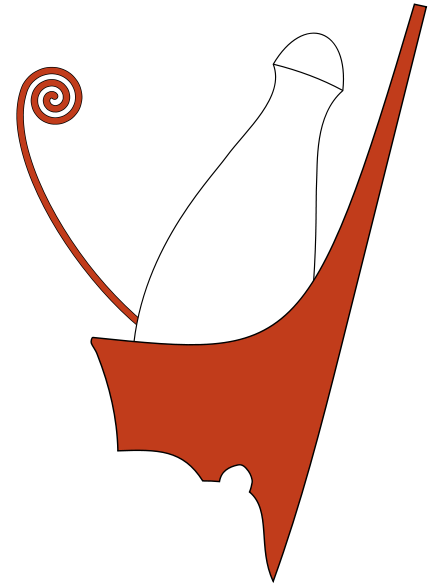
Shen/Shenu Ring
Shen is the coiled circle or cartouche symbol in ancient Egyptian culture which represents divinity. It was mostly used in Mesopotamia and Egypt.
The symbol, which had the shape of a circle originally, was sometimes used as a cartouche. This kind of use aimed to represent divine protection.
That is to say, the person whose name was written inside the Shen symbol, mostly a king or royalty, was under divine protection according to the belief.

Uraeus the Cobra
Derived from the word “iaret” meaning “the risen one”, Uraeus is a significant ancient Egyptian symbol that is made of a rising cobra.
Uraeus symbol represented the connection between gods and kings/pharaohs and the pharaohs were recognized with the Uraeus symbol they wore.
Uraeus also symbolized the absolute authority and power of the gods and the pharaohs.
It was believed to give magical powers and ensure magical protection to the wearer.
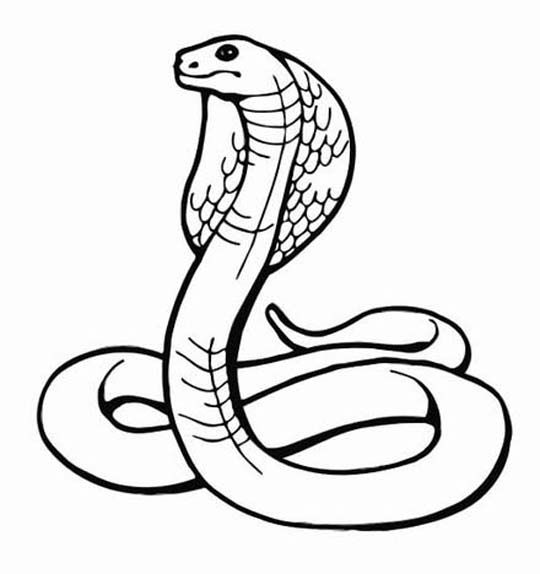
Seba
Seba was the star symbol in ancient Egyptian culture and it represented the star-gods or constellations.
In Egyptian mythology, stars were called as “the followers of Osiris” since they were identified with the souls of the dead in Duat, the Underworld. When it is drawn within a circle, the Seba symbol represents Duat.
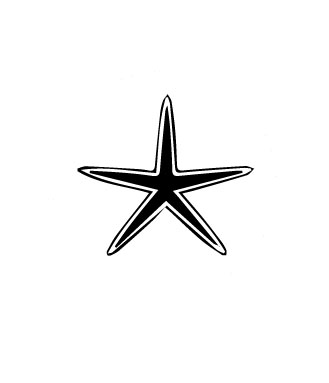
The Crook and the Flail – Hekha and Nekhakha
The shepherd’s crook symbol in ancient Egyptian culture was the symbol of the state’s power over its people. The word “hekha (HqA)”, which is also an epithet of Osiris, means “to rule”.
In a similar way, the flail (nekhakha) was considered as the symbol of royal power. Renowned Egyptologist Toby Wilkinson suggested that the flail symbol represented a king’s coercive power and control over his subjects.
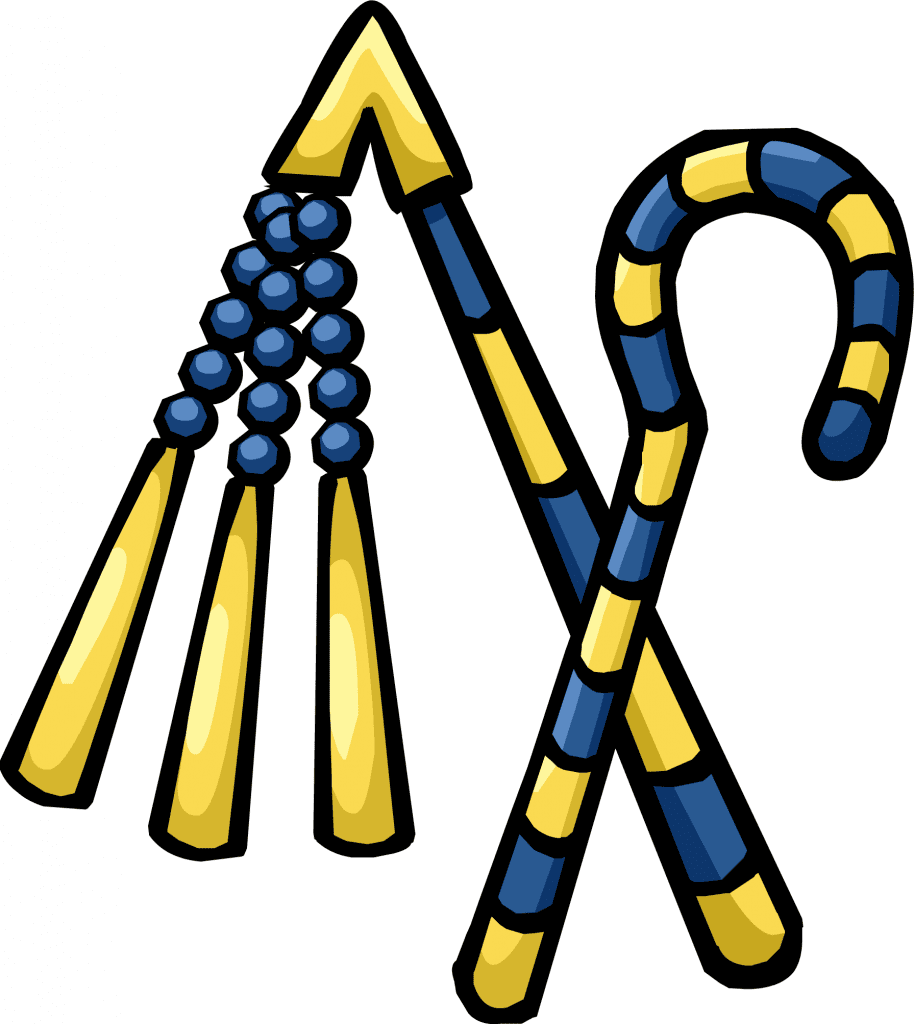
Primordial Hill
The primordial hill symbol seen in Egyptian inscriptions is among one of the oldest symbols that were used. Egyptians believed that this hill created lands during the chaotic process of creation. It is believed to have inspired the idea of building pyramids.
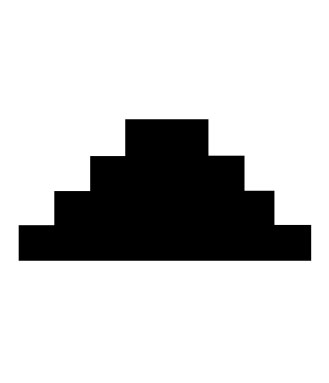
Menat
Associated closely with Hathor and Ihy, her son, Menat was known as the symbol of goddess Hathor.
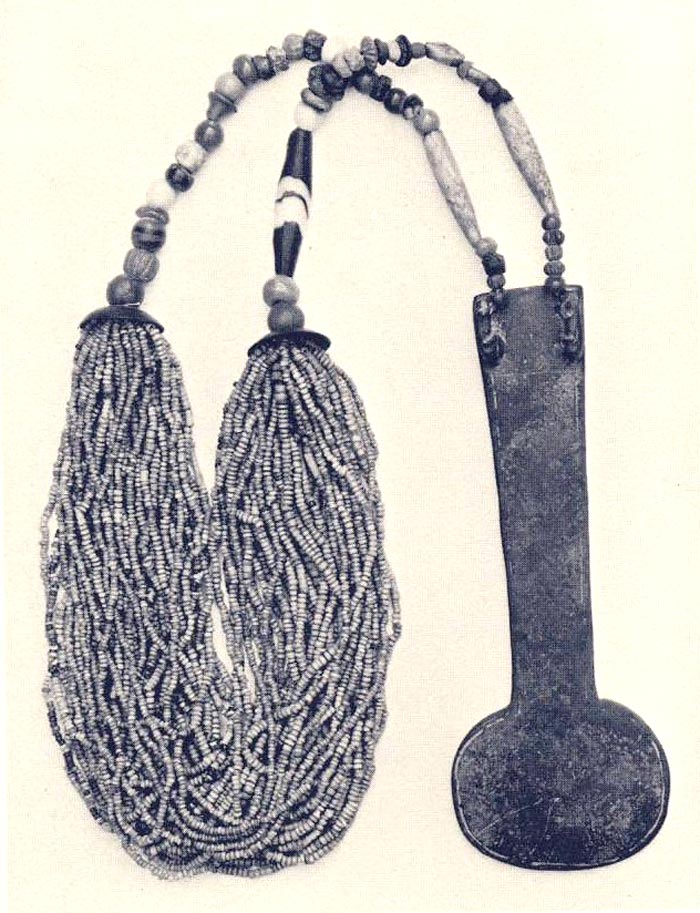
In fact, “the Great Menat” was one of Hathor’s names. The Menat symbol represented life, fertility, birth, rebirth, potency and joy.
Egyptians wore menat amulets hoping it would bring prosperity, fertility and fortune.
Liked what you have just read? Please kindly share the article on social media. Got questions ? Feel free to ask them in the comments section!




